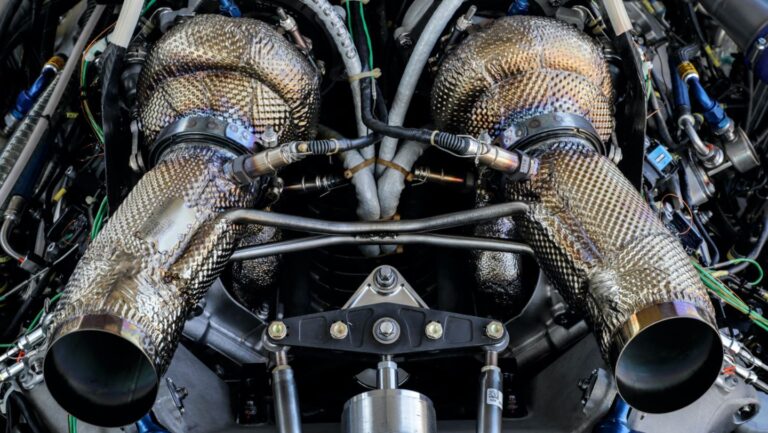Porsche has confirmed, as has long been suspected, that its LMDh car will be powered by a large capacity, twin-turbo, supercharged V8 engine. Based on a road-car unit, the engine will be shared with Audi’s LMDh program and likely also Lamborghini.
“We were spoiled for choice with the engine for our LMDh prototype, because the product range offers several promising baseline units,” explained Thomas Laudenbach, VP of Porsche Motorsport, which has just begun testing the car in earnest. “We decided on the V8 biturbo, which we feel offers the best combination of performance characteristics, weight and costs. The kick-off to the active test program was an important step for the project.”
The engine regulations for the LMDh vehicle class allow a great deal of freedom in terms of displacement, design and number of cylinders. Maximum revs are 10,000rpm, with the pass-by noise measurement capped at 110dB. The engine must weigh a minimum of 180kg, including the inlet and exhaust system as well as the peripheral cooling components. If used, this weight also incorporates the turbocharger/s, including the charge air cooling. In line with the regulations, the maximum output lies between 480 and 520kW (645-697bhp). This range also allows adjustments to be made within the Balance of Performance (BoP) parameters, which are intended to ensure parity between all competing LMDh racing cars.
The torque curve is also clearly defined. Under racing conditions, the combined power output of the combustion engine and hybrid drive is capped at 500kW (680ps) at the half-shafts. The standard components for the hybrid system are supplied by Williams Advanced Engineering (battery), Bosch (motor-generator unit and control electronics) and Xtrac (transmission).
Urs Kuratle, overall project manager for LMDh at Porsche Motorsport, added, “The rollout of the LMDh racing car was also the first track outing for Porsche Penske Motorsport. The squad worked well together right from the start, showing a high level of professionalism in all areas. After all, the operational requirements for the safe running of a hybrid vehicle are very high. In the next outings we will focus on going deeper into the required processes and procedures. During these first test days at Weissach, the V8 biturbo impressed us in every respect. We’re convinced that we’ve chosen precisely the right unit.”



